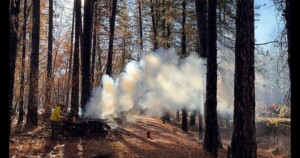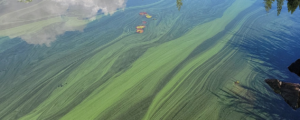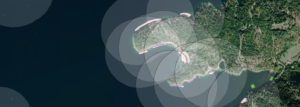At the next HLWID Board meeting, on May 19, we’ll discuss the EC Grant Stakeholder Engagement Plan. We would like feedback, please.
Trying to read the plan like a term paper runs the risk of drawing you into details and loosing you in the weeds so to speak. And, it might be boring.
Certainly the weeds need to be combed, but first, I beg your indulgence and invite you to engage in a thought experiment.
What stakeholder perspective are you coming from?” Can you put yourself in another’s shoes?
Nine Stakeholder groups have been identified (see page 2). Don’t try to assess the engagement of every group at this time. Instead, determine which group you fit into best. That’s the easiest lens through which to view the engagement plan, and one that you’re not likely to shed as you scan the document. In addition to yours, intentionally pick any different perspective. You will consider if and how the Improvement District might engage that perspective going forward.
Visitor – I like to go swimming and boating, and I like to look at the environment and breathe the clear air. When I visit the lake, I don’t want to think about bad things or about constraints. I just want to be there and be myself there.
Lake resident – I love where I live. I love the view, the accessibility of nature-born experiences, the sights, sounds, and feels of this place that is so much nature. I want it to be like this forever. I feel frustrated when things impinge on my lived experience, i.e., wakes that muddy the water, inject engine and wake sounds into my space, rock my dock and damage my shoreline; plants the grow in my clear-to-the-bottom water and mess up my wading or swimming experience and clog my boat motor; contaminants or living things that make the water bad to drink and dangerous to touch, particularly when I don’t know what kind or level of danger and when I can’t see them. I feel burdened and a bit angry when I have to police what others do to protect my lived experience. I think I’m willing to learn how to protect my property and my family.
Practice becoming engaged from both perspectives.
With your two hats in hand, pause, recall an experience (or two) in which you received some new information and felt moved by it. How did the information get to you? Had you gone looking for it, did it come looking for you, did you receive it serendipitously? Was it connected to any other recent experience, or did it bring whole new ideas into your view? Did it elicit positive energy or negative? Imagine the other’s perspective and what a similar experience might have been like? How might it be different than yours?
I received a postcard from a riparian conservation group. I got excited and at first felt positive. Then I read the whole thing and felt affronted and like I needed to share it as something to be avoided, which I did in a later conversation with another conservation group.
How would a lake resident experience this? A postcard. They are likely to receive it with interest and have an initial engagement – i.e., read it. I think it would generate positive feelings. I don’t know if they would think it was a good idea or a bad one because I don’t know what their experience or knowledge areas would be. I’m not sure that this particular postcard would relate to the resident directly because it talked about something that developers could do. As a resident on HL, I wouldn’t see my property as being subject to development because it’s not big enough.
Connect to the Project
Read the Goals (top pg 1) and review any other documentation of the Emerging Contaminants Grant project you have available.
Enter 2025
Read the 2025 Project vs Engagement matrix that starts at the bottom of pg 3 and continues through the top of page 5. Identify the strategies that are targeted at you.
Visitor: V-log; signage; website; social media;
Resident: Newsletter; Press Releases, signage; launch meeting;
Imagine receiving the information as described and how you might respond, i.e., feel, think, do. Do the same from the other perspective. Scan the strategies that are targeted toward stakeholders who are not you or the other perspective you’re inhabiting. Do you feel like you’re missing out? Or do you feel like you dodged a bullet?
As a visitor, if this project is going to put constraints on my experience, I would like to be forewarned. The information needs to be in proximity in time and space to my planning activities and then to my visit. I would follow signage in the moment, and if I’m renting in the North Arm I would heed fliers/postcards. But what kind of interaction could I have with the project, being a visitor? Can I impede the project inadvertently? Can I be harmed by the project if I come across its activities?
As a resident, I would also like to be forewarned about the launch meeting and to get enough info in the invitation (newsletter, press release) to decide whether to attend the launch meeting or not. The launch meeting is going to tell me everything about how involved I might want to be going forward.
Feedback
1. Do you or the other perspective NEED to be engaged in 2025?
Visitor – if the project is going to interfere with my experience, or my experience is going to interfere with the project. Then info should be in my face while I’m planning, and at the point-of-use when I’m there. If not, then no.
Resident – Yes! I want to be aware of what’s happening in my space, sphere of interest. But just FYI if it’s not going to physically intersect with my space or my activities.
2. Does the Stakeholder Engagement Plan propose to do things that will reach you, i.e., make you stop and engage long enough to read (or listen to) the message?
Does it propose to do things that will reach the other perspective?
Visitor – I’m not sure it’s out in the world enough to be in my face when I’m planning. When I’m there, I think the signage will be effective. I think a renter’s flyer is missing.
Resident – All of the plans will reach me.
3. How will these things meet your needs, or how will they miss?
How will these things meet the other perspective’s needs, or how will they miss?
4. Are you likely to respond to these strategies and how? Is your other perspective likely to respond and how?
Visitor – signage I’ll comply with.
Resident – I’ll be motivated to look deeper and attend the meeting
5. Are there other means for engaging you in 2025 that would work better for you?
Are there other means for engaging the other perspective that would work better?
Visitor – I think where the info is published is as important as how, i.e. in my face when I’m planning and when I’m recreating. So, the V-Log might not be necessary unless it’s in the right place.
Resident – I wouldn’t mind if important updates come in my mail. Are there local online news sources that would show those?
Take a broader view
Read the Objectives in the middle of page 1. This is how, for the moment, we’ve defined “engagement.” Have we missed anything? Is there anything there that is so low a priority as to not merit a mention?
Return to the list of stakeholder groups. Have we missed any? Is there any group there this is so low a priority as not to merit attention?
You’ve probably thought of some groups or sub-audiences and wondered if they are included. Check out the list in the Stakeholder spreadsheet (https://docs.google.com/document/d/1W57rfo3jB_et3WK0_9GQYn1Bf6HS9qDM/edit#bookmark=id.7p2hcimhcmvt) and feel free to suggest additions, particularly if you have contact information for any of the groups listed there.
Thank you
–Mary Ann Stoll
Communication and Public Outreach Manager
Schedule a time to meet!
Hayden Lake Watershed Improvement District
BLOG: http://haydenlakewid.com/
Facebook: https://www.facebook.com/HLWID/
Phone: (480)227-1536


